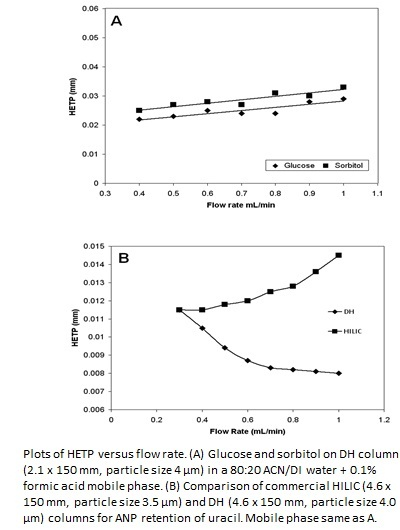How does efficiency in Aqueous Normal Phase ANP compare to HILIC in HPLC - FAQ
November 12, 2012
/
/
/
/
/
/
/
Aqueous Normal Phase ANP HPLC is a distinctly different retention mode than Hydrophilic Interaction Liquid Chromatography or HILIC.
In HILIC, evidence has shown that retention is achieved by partitioning in and out of a water layer surrounding the stationary phase surface. With a much less polar surface TYPE-C silica columns do not exhibit this same partitioning retention behavior.
Speculated local solvent displacement in ANP retention is likely to lead to faster mass transfer than partitioning in and out of a water layer. The figure below illustrates the difference in efficiency measured as height equivalent of a theoretical plate, (HETP) between an ANP column and a HILIC column. The significant difference in van Deemter plots suggests that the two mechanisms are very different.
See also: What are the main differences between ANP and HILIC?


In HILIC, evidence has shown that retention is achieved by partitioning in and out of a water layer surrounding the stationary phase surface. With a much less polar surface TYPE-C silica columns do not exhibit this same partitioning retention behavior.
Speculated local solvent displacement in ANP retention is likely to lead to faster mass transfer than partitioning in and out of a water layer. The figure below illustrates the difference in efficiency measured as height equivalent of a theoretical plate, (HETP) between an ANP column and a HILIC column. The significant difference in van Deemter plots suggests that the two mechanisms are very different.
See also: What are the main differences between ANP and HILIC?


